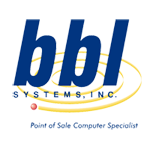Aside from making your life easier and freeing up time to spend with your family, one of the most important things your point of sale program should do is provide simple, accurate and reliable reports that give you a quick snapshot into the vitals of your shop. The Profit System from BBL and its sister cloud version stand head and shoulders above the industry when it comes to reliable and comprehensive reporting. The reports, however, will only be beneficial if you’re doing your due diligence in putting in good data.
I won’t bore you too much on the ins and outs of database management. To the average person, database management can sometimes be just about as fun as a bridesmaid with a dress that doesn’t fit. There is one saying, however, that should stick with every bridal shop owner and make database management a little simpler and easier:
“Garbage In, Garbage Out”
Sure it’s a little harsh and maybe even a little crass, but it’s the cold, hard, ugly truth and gets right to the point– if you are not taking the time to set up a method for classifying your inventory, or more specifically your colors, your sizes, your retail pricing, wholesale pricing, add-ons, etc, you’re bound to have some issues when you try to go to pull a sales report.
How you Know You Have Issues With Your Reports
I guess it makes sense to first identify HOW you know you have inaccurate reports in the first place. One of the first signs is when you go to pull a report and you really start to question if the report is correct in saying that you only sold 5 bridal gowns in the last 3 weeks. You swear up and down that it was closer to 13. After a little investigation of, say, your paper receipts or maybe after you dig deeper into your sales report, you piece together that it was, in fact, 13 bridal gowns sold.
Or– let’s say you order special order gowns off of paper tickets or receipts and notice that you’re ordering a lot more gowns than what The Profit System is saying in its sales reports.
These are issues, and very indicative of incorrect data input.
Why It Matters
The purpose of having data organized in reports is to be able to quickly make sense of large chunks of information and enable you to make sound decisions for your shop without too much effort. In the daily hustle of running your business this is absolutely crucial. On a busy Saturday, who has the time or the energy to spare to hand count items sold? Or add them up with a calculator?
What’s worse than the inconvenience, however, is the very real possibility of inaccurate reports telling you that your business is doing worse than it actually is. Or, just as bad, or in some cases maybe more detrimental, is having the reports telling you that your business is doing better than it actually is.
How To Fix It
If “Garbage In, Garbage Out” is true, so must be the opposite in terms of data: “Quality In, Quality Out”.
1. Start with Organizing and Classifying your Inventory On Paper
The easiest thing is to get out a plain piece of paper or spread sheet and make out all of your main categories. Start from the broadest classifications. Example:
- Bridal
- Social
- Belts
- Jewelry
- Head Piece
- Veil
- Shoes
After you make your main categories, then make your sub categories:
- Bridal
- Strapless
- Sleeves
- Fit and Flare
- Social
- Beaded
- Tank
- Sleeves
- Jacket
2. Recategorize All Inventory In Profit System or in EverywhereBridal
Once your categories and sub categories are mapped out, print it out and keep it handy for reference when you or your employees receive new inventory. More on this later in step 3.
It is possible to quickly and efficiently recategorize ALL your inventory without too much trouble. In reality, most shops could complete this within a few days MAX. For help on how to do this, contact support at [email protected]
3. Properly Categorize ALL New Inventory Moving Forward
This is a very SIMPLE and CRITICAL step, yet easily overlooked when working towards quality data and quality reports. Make double sure that you and your team reference your map made in step 1 when receiving new inventory. Make sure every item is properly tagged with at least a style code number.
It’s also pretty critical that you enter as much data as you can in case you have a question later on down the line about your inventory. The proprietary inventory input forms designed by BBL do a great job of walking average users through inventory input.
4. Ring Up Items Correctly
This step is just as crucial as entering items into inventory correctly. Make double sure that you and all of your employees are well trained on how to properly ring up a dress or an item with the correct style code and selects the proper size and proper color. Each of these things are separate data points and contribute to sales or inventory reports.
DON’T ring items up under generic Style Codes, such as NOSKU or the like. This is the number one way to mess up your reports. Further, it makes it more difficult as you grow your shop to hold employees accountable for what they sell. If NOSKU is used, how do you know a year from now if someone sold a $300 belt or a giant stuffed unicorn?
Bringing it all together
While it might seem a little daunting at first to try to tackle your inaccurate reports, it isn’t quite so bad once you get rolling. You’ll likely find that it takes less time than you originally thought.
It is worth noting that it will take some time to see results from your reorganized data when looking at long term reports on the Sales Report or the Sales Graph.
Follow these steps and you’re well on your way to more accurate reports. You’ll thank yourself next time market rolls around.
We are here to help! Have a special circumstance or need one on one guided help? Contact BBL Systems, creators of The Profit System and EverywhereBridal for support or one on one individualized coaching and support. Contact us at [email protected] or 1-800-587-7277

